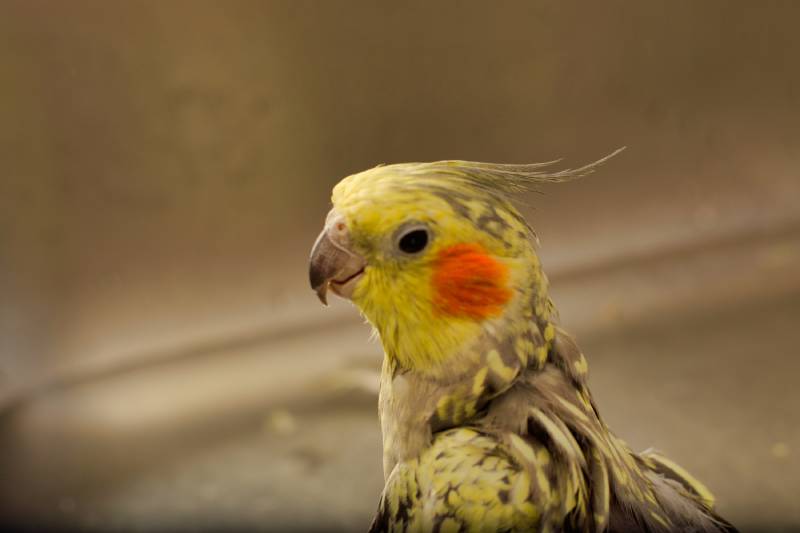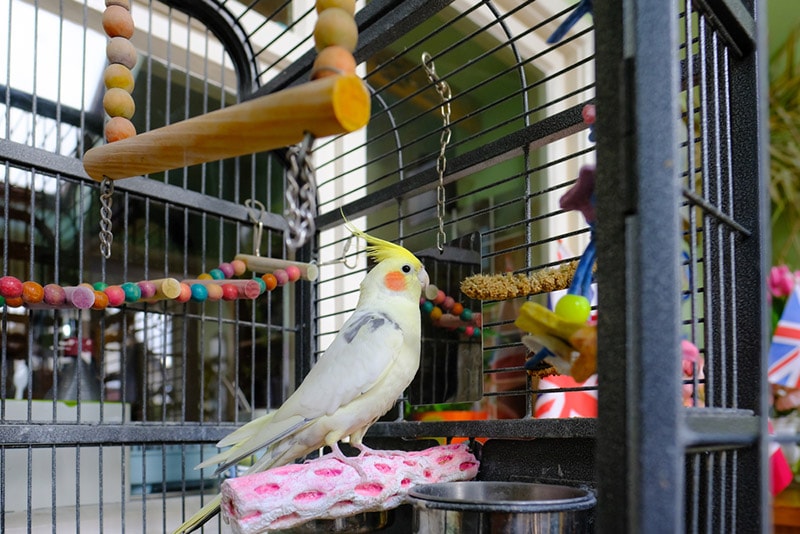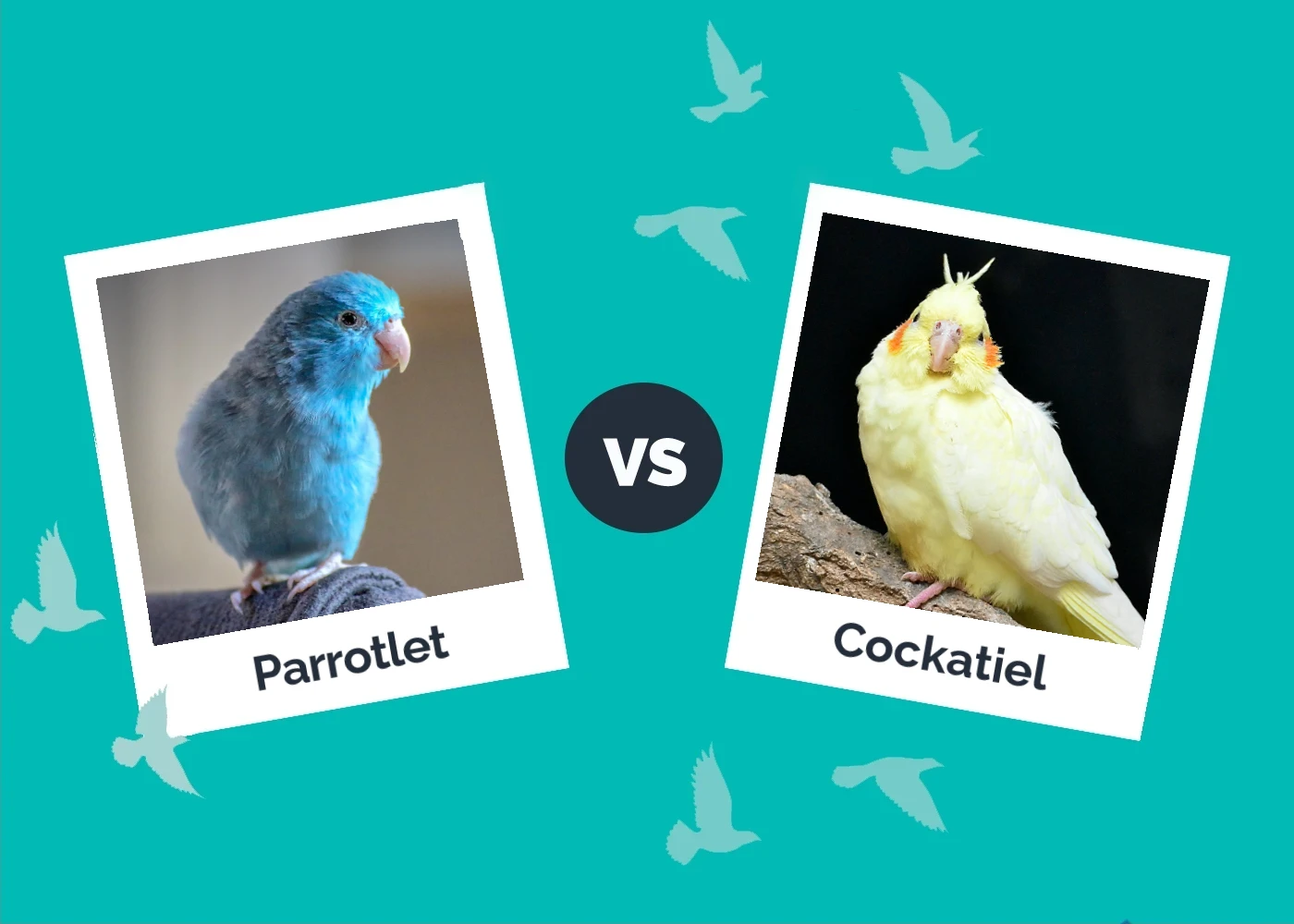Male vs Female Cockatiel: What’s The Difference? (With Pictures)
Updated on
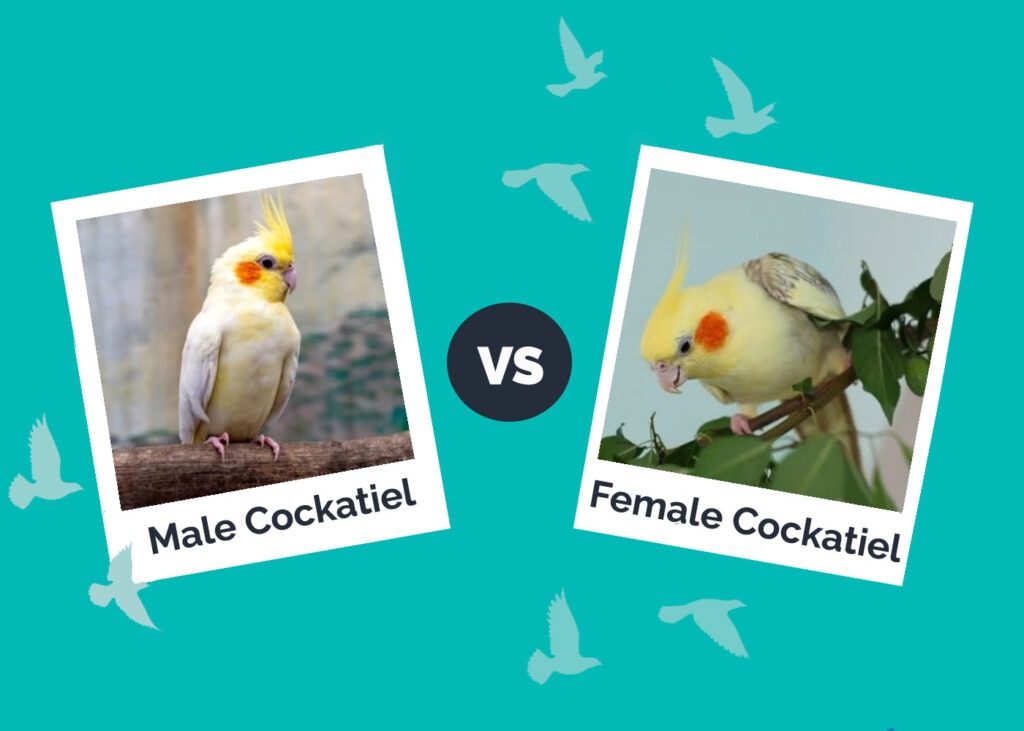
Whether you currently have a cockatiel or are considering adopting one, the topic of gender may come up at some point. Of course, you don’t need to know the sex of your bird unless you plan on one day breeding it, but some owners just like knowing, without a doubt, the gender of their pet.
While sometimes a cockatiel’s sex can be determined by looking at the markings and coloring it has an adult, there are other methods you can use to get an idea of the gender. Keep reading to learn how to use coloring, personality, vocalizations, and reproductive behaviors to determine the gender of your cockatiel.
Coloration
You may need to wait until your cockatiel gets its adult plumage after its first molt to get an idea of its gender from its coloring. Both genders look identical when they’re very young.
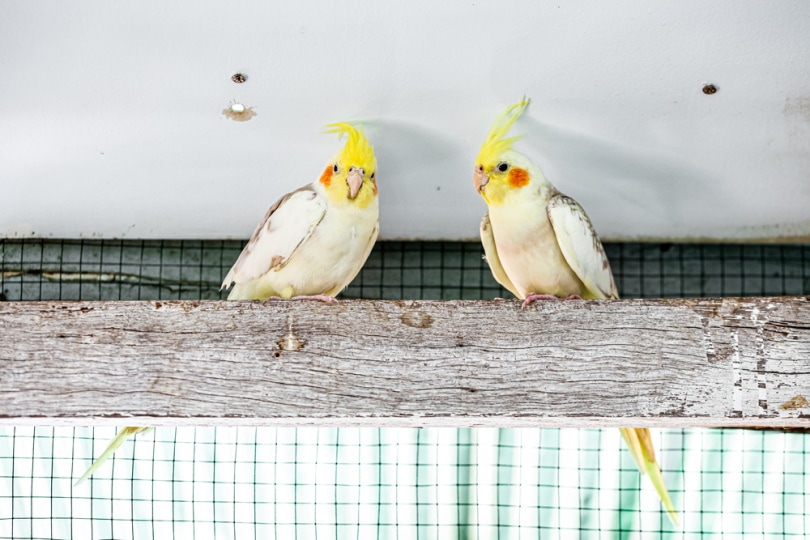
Albino or whiteface cockatiels are pure white, so using their coloring to determine gender is impossible.
| Mutation | Male | Female |
| Normal Gray, Fallow, Cinnamon, or Silver | Bright orange spots on yellow faces | Light orange spots on a muted yellow or gray face |
| Pied | Darker tail without bars | Barred tails (post molt) |
| Lutino | Tail without bars | Faint barring on the tail (post molt) |
| Yellowface | Yellow face, no barring on the wing and tails (post molt) | Gray face, keeps the tail barring |
| Pearl | Loses pearled marking | Retains pearled markings (post molt) |
Personality
Most female cockatiels are on the shy and reserved side. They are less aggressive and will often watch from the background. A female will seek out “her” humans and make contact calls when they’re not around. They love snuggling up on shoulders and are less likely to exhibit “show off” behaviors.
Females may not be as keen on strangers, taking time to warm up to new people. Male cockatiels tend to be outgoing, curious, and entertaining. They often love to be the center of attention and will be forward in seeking attention. In addition, they will come forward when someone new is nearby.
Males enjoy hanging out on shoulders and watching their humans as they go about their day. They are very active and animated and may hop around their cages and whistle at you to get your attention. Males are expressive and not afraid to tell or show you if they dislike something with their open beaks and whiny sounds.
Male cockatiels are more likely to spend time in front of a mirror than females. They may strut in front of it, call at it, or just inspect it.
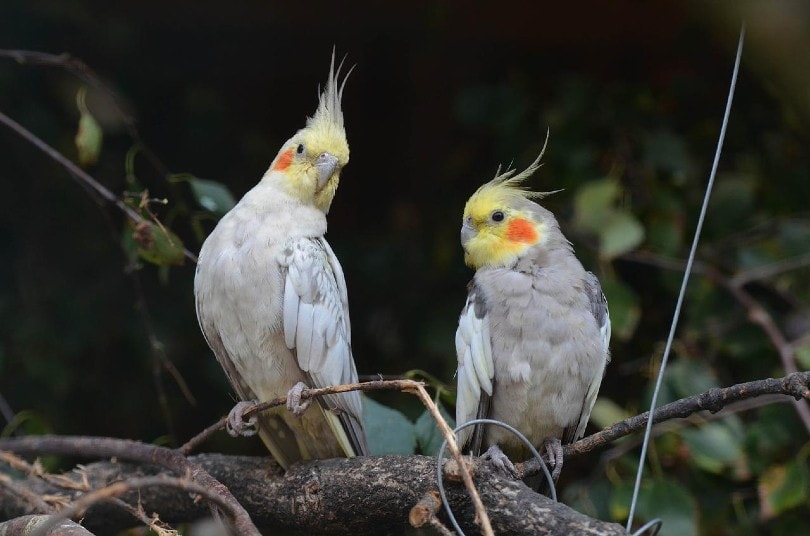
Vocalization
Though it’s not a hard and fast rule, male cockatiels are typically much more vocal than their female counterparts. When they are around six months old, males will start whistling, singing, and may even begin to mimic the sounds they hear in their environment. Most cockatiels that learn to talk are males.
Males will imitate human language in a sing-song voice and even mimic the sounds they hear throughout the household, such as the doorbell or microwave beep.
Females can speak, but their vocabulary may only consist of a few words. They typically make only one call, a whistling sound that they use to contact call other cockatiels or their humans.
Reproductive Behavior
Female cockatiels may try to reproduce without a male present. They can even lay unfertilized eggs, which may surprise new cockatiel owners.
Before they begin the reproductive process, single female cockatiels may self-stimulate. For example, they will back into the corner of their cage, raise their tail, droop their wings, and make a cooing sound. Sometimes they let one of their toys lay across their back while performing this self-stimulation which bird experts believe is a substitute for the weight a mate would place on the back during copulation.
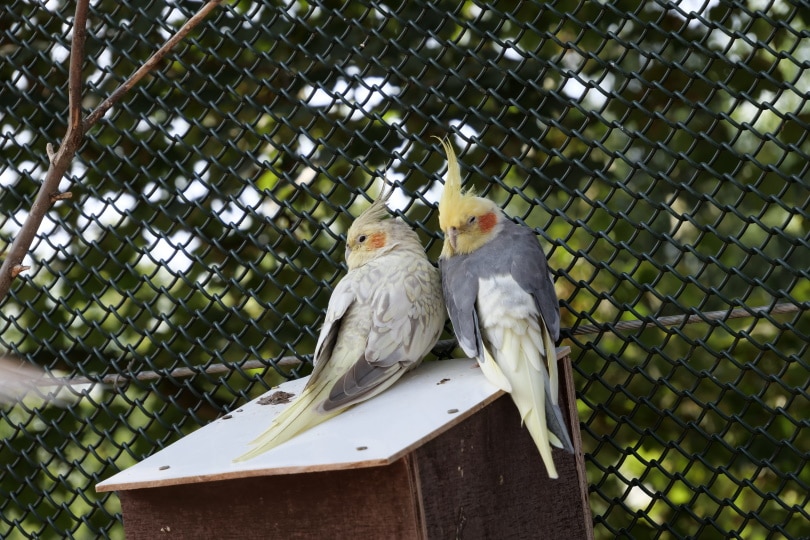
A female in the presence of a male cockatiel may try to get his attention by seeking close contact and preening.
Conversely, males tend to favor showing off behaviors to try and win a mate over. They will sing or strut in an attempt to get the attention of potential mates. They may fluff up their feathers and make head-bobbing motions or tape their beaks against objects.
As with females, males will often turn to self-stimulation if no female is present. They will tuck their tails down and rub their vent area on whatever they can find, like toys, perches, or even your hand.
Male vs Female Needs
If you’re considering adopting a cockatiel, you might wish to familiarize yourself with the gender-specific needs you’ll need to tend to.
Females
Female cockatiels crave companionship from their owners, so you need to be willing to spend time with your female every day. They adore hanging out with their humans and will be unhappy if they’re left alone for too long.
Females may lay eggs now and then. You should ensure they always have access to a cuttlebone or form of calcium to reduce the likelihood of becoming egg-bound.
Some females may become chronic egg-layers, which you’ll need to discourage. Excessive egg laying is hard on their bodies and will deplete them of nutrients like calcium and protein. In addition, it can cause conditions like osteoporosis, seizures, or prolapsed oviducts.
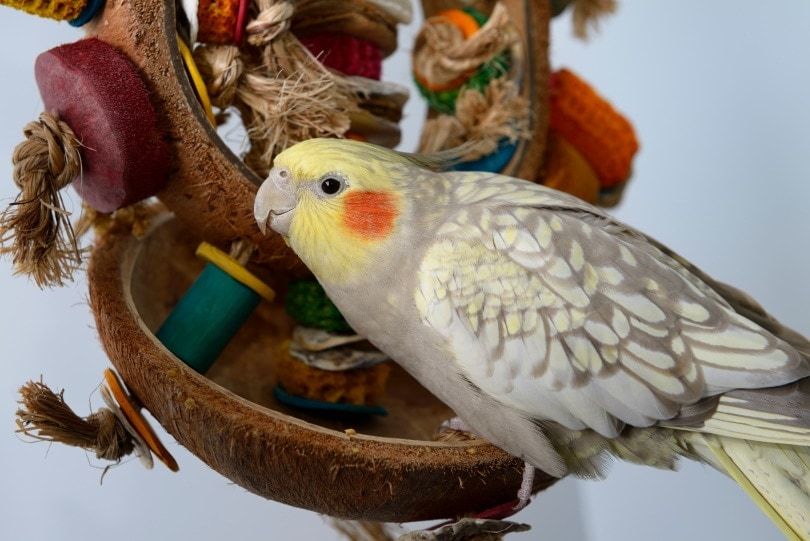
Males
Like their female counterparts, males love being near their humans or other birds. They thrive on freedom, so having a space in your home to free fly will keep them happy.
Males can become more aggressive during the breeding season. They may become obsessed with objects in their cage or even someone in your home. Since they’re more vocal, you should be prepared to listen to those vocalizations throughout your day.
In Summary
| Female Cockatiels | Male Cockatiels |
| Quieter, may contact call | Vocal, whistling, talking, calling, mimicking |
| Lighter orange cheeks with pale yellow or grey face | Bright orange cheeks with a yellow face |
| Reserved, wary of new people | Outgoing, center of attention |
| Self-stimulates with a raised tail, drooping wings, and cooing sound | Self-stimulates by tucking tail and rubbing their vent |
| Doesn’t care about mirrors | Fascinated with mirrors |
Final Thoughts
While you can use the techniques above to determine if your cockatiel is male or female, you won’t know for sure unless you spring for a DNA test.
If you’re not yet a bird owner, you might consider using our guide to help you choose whether you’d like to adopt a female or male cockatiel. Regardless of which gender you adopt, you’re sure to have a lovely companion pet who will bring joy, laughter, and feathered snuggles into your life.
See also:
- Cockatiel vs Lovebird: Key Differences & Similarities
- Cockatiel Body Language: 15 Crucial Cues to Look For
Featured Image Credit: left, ONGUSHI, Shutterstock; right, Vasily Belko, Shutterstock


